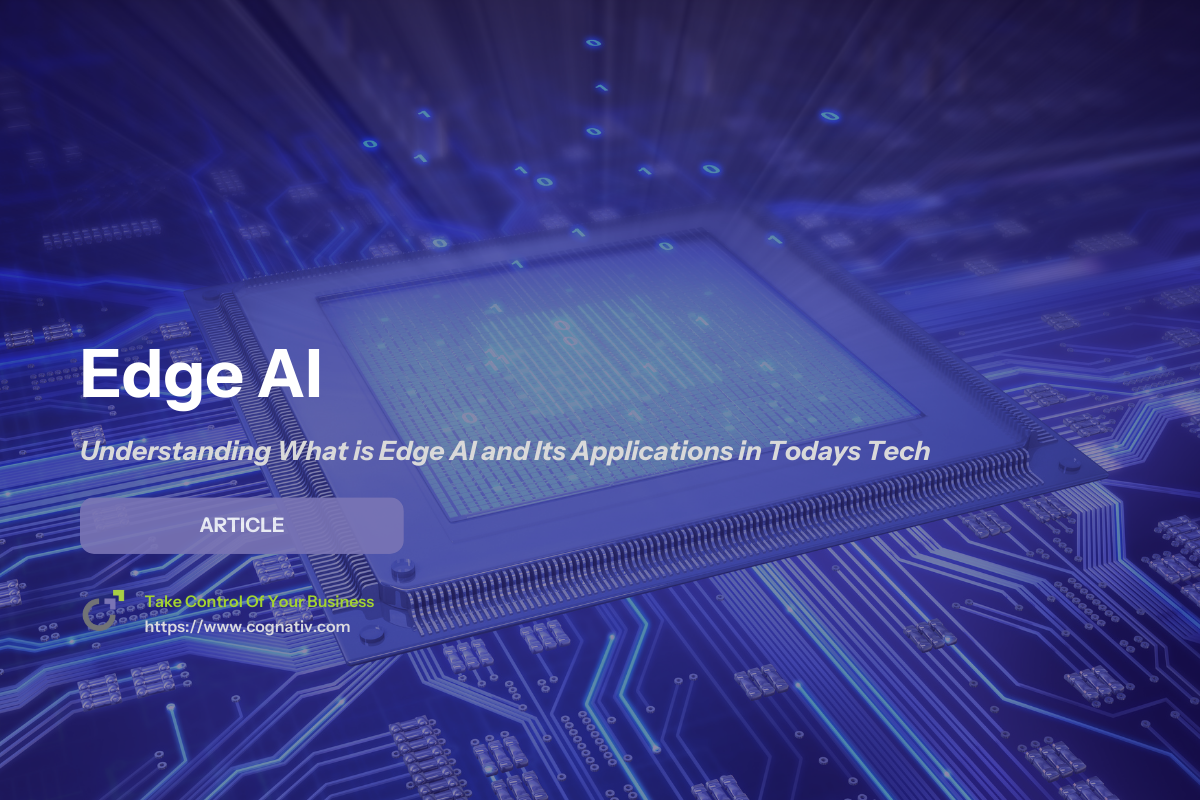

Sunday, August 24, 2025
Kevin Anderson
What is Edge AI?
Edge AI is the integration of edge computing and artificial intelligence (AI) that allows real-time data processing directly on edge devices such as IoT devices, smartphones, or smart cameras. Instead of transmitting raw data to a centralized data center or cloud servers, edge AI systems process data locally.
This shift enables:
Reduced latency by making instant decisions without relying on round-trip communication to the cloud.
Improved security by keeping sensitive data on local edge devices.
Lower bandwidth and operational costs through minimized data transmission.
Higher efficiency in processing data directly, which is critical for real-time decision making.
Edge artificial intelligence is being deployed across industries, powering applications such as self-driving cars, surveillance cameras, smart home appliances, and industrial IoT systems. These solutions highlight the benefits of edge AI technology in providing both speed and privacy.

Edge Computing and Cloud Computing
Edge computing is a distributed computing model that processes data locally at or near the network edge, where the data is generated. By eliminating reliance on a central location, it enables real-time data processing and reduces latency. Examples include IoT sensors analyzing temperature data or smart cameras identifying objects without sending information to remote servers.
What is Cloud Computing?
Cloud computing, in contrast, uses centralized data centers and cloud-based platforms to store, manage, and analyze data. It is ideal for AI applications that require vast computational power and the ability to train models on massive datasets. However, it introduces challenges such as:
Higher latency for real-time tasks.
Risks when sending data across networks, especially sensitive data.
Costs related to internet bandwidth and storing data at scale.
Hybrid Approach: Edge AI and Cloud AI
In practice, many organizations deploy a hybrid model:
Cloud AI is used for ai model training, storing historical data, and large-scale analytics.
Edge AI models are deployed on local edge devices for processing data locally and delivering real-time decision making.
A feedback loop periodically updates the edge AI systems by sending selected data back to the cloud for retraining and refinement.
This hybrid strategy allows businesses to combine the scalability of cloud computing with the efficiency and low latency of edge AI.

Edge AI Technology
Edge AI technology refers to the hardware and software stack that enables edge AI applications. It typically involves:
Edge Devices
IoT sensors, smart home appliances, smartphones, and industrial machines that collect data.
Edge hardware is optimized for low power consumption but still supports real-time data processing.
Edge AI Models
Optimized AI models created through machine learning algorithms and deep learning.
Designed to operate on limited computational resources available on local edge devices.
Edge AI Platforms
Frameworks that allow data scientists and engineers to develop, deploy, and manage edge AI applications.
Provide tools for handling edge ai work, monitoring model performance, and scaling deployments.
Inference Engines
Specialized software and hardware that enable real-time decision making by running trained AI algorithms directly on devices.
Examples of Edge AI Technology in Action
Quality control in manufacturing using computer vision models on smart cameras.
Predictive maintenance where machines analyze vibration and sensor data directly.
Supply chain analytics where IoT devices optimize inventory decisions.
Smart checkouts in retail powered by edge artificial intelligence.

How Does Edge AI Work?
The process of edge AI work can be broken into stages:
Data Collection
IoT devices and sensors collect data (temperature, video, motion, etc.).
Processing Data Directly
Using machine learning algorithms or deep learning networks, the device performs data processing locally without relying on remote servers.
Autonomous Decision Making
Edge AI systems make decisions in real-time, such as detecting defects or triggering alerts.
Feedback Loop
Some data locally is transmitted to the cloud computing facility for retraining.
Updated AI models are redeployed back to the edge devices.
This continuous learning process allows edge AI applications to adapt over time while maintaining real-time responsiveness.

Distributed AI and Edge AI
Distributed AI and edge AI are complementary concepts:
Distributed AI: Involves spreading AI tasks across multiple connected devices or other physical locations for scalability.
Edge AI: A subset of distributed AI that specifically focuses on deploying AI models on local edge devices.
Benefits of Combining Distributed AI and Edge AI
Improved scalability across diverse edge environments.
Enhanced reliability as multiple devices share data processing tasks.
Better privacy since sensitive data can remain within its physical locations instead of being transferred to remote servers.
This distributed approach enables industries to optimize business operations with real-time decision making at scale.

Cloud AI and Edge AI Comparison
Aspect |
Cloud AI |
Edge AI |
|---|---|---|
Data Location |
Processed in centralized data centers |
Processing data locally on edge devices |
Strengths |
Suitable for training complex AI models and analyzing historical data |
Enables real time data processing and edge ai applications |
Limitations |
Dependent on data transmission, internet bandwidth, and storage costs |
Constrained by limited computing power on devices |
Best Use Cases |
AI applications requiring massive computation, such as weather patterns, large-scale simulations, and train models |
Applications needing real time decision making, such as self-driving cars, smart cameras, or surveillance cameras |
By combining Cloud AI with Edge AI, organizations gain the flexibility to leverage cloud based platforms for scalability while using edge artificial intelligence for real-world problems that require immediacy.

Conclusion: The Benefits of Edge AI
So, what is Edge AI? It is a paradigm that merges edge computing with artificial intelligence AI to deliver real time decision making on local edge devices.
Benefits of Edge AI
Reduced latency by processing data on-device.
Improved security and privacy by keeping sensitive data local.
Lower costs by minimizing data transmission to the cloud.
Increased efficiency through continuous edge ai work with feedback loops.
Scalability with distributed AI across many edge environments.
Edge AI Applications
Smart home appliances that adjust settings automatically.
Self-driving cars that process real time data for navigation.
Surveillance cameras that detect anomalies without human intervention.
Industrial IoT for predictive maintenance and quality control.
In conclusion, edge AI offers industries a competitive advantage by combining data processing locally with the power of cloud computing. As edge AI systems continue to evolve, they will play a central role in creating intelligent, efficient, and secure digital ecosystems.

